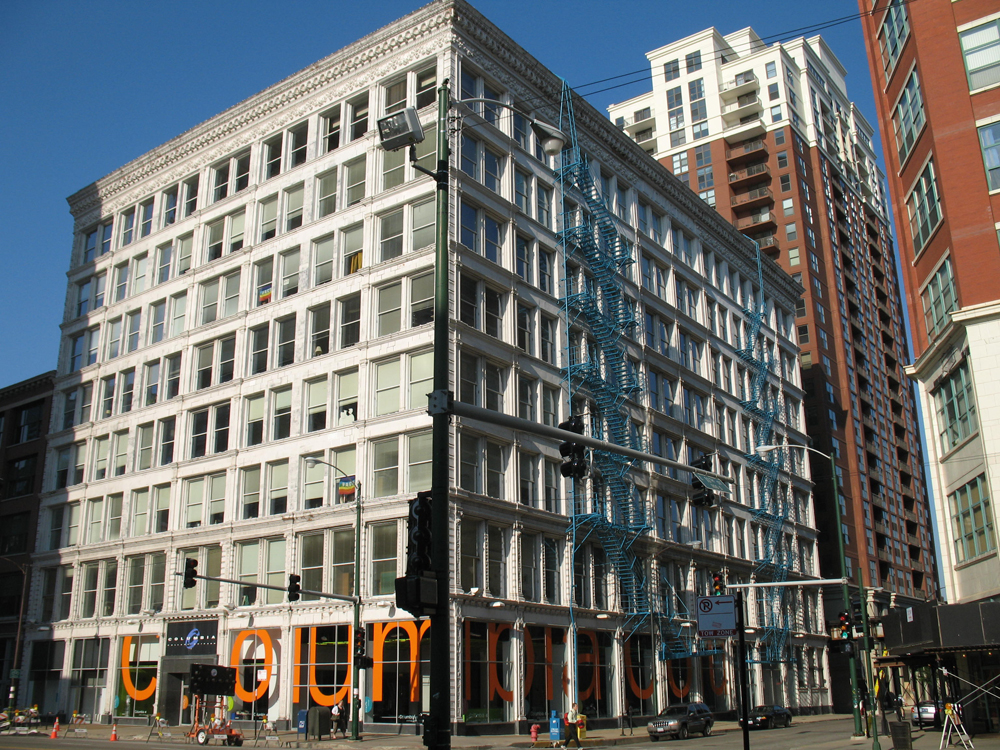The historic Ludington Building
The site of the 2016 LION Summit is the historic Ludington Building, the earliest steel-frame structure still standing in Chicago.

The site of the LION Summit will once again be the historic Ludington Building, the earliest steel-frame building still standing in Chicago.
The building was designed by architect William LeBaron Jenney, who is acknowledged as the "Father of the Skyscraper" due to his developing the fire-proofed metal skeleton-frame system of construction. The structure on South Wasbash, built in 1891, is one of only two remaining loft-style buildings designed by Jenney in Chicago. The eight-story, 177,000-square-foot building was one of the first skycrapers entirely clad in terra-cotta.
The building was remodeled on the interior by Columbia College after the school purchased the structure in 1999. It has a long history in the publishing business — it was commissioned by Mary Ludington Barnes for the American Book Company, owned by her husband, Charles Barnes — and is a fitting site for a gathering of publishers. It was listed on the National Register of Historic Places in 1980.
Architect and engineer Jenney trained many influential Chicago architects at the turn of the 20th century, including the world-famous Louis Sullivan.
The Ludington Building is an archetype of the Chicago School of design of its period, with a flat roof, cornice and subtle ornamentation, as well as large banks of windows made possible by the steel frame. It "represents one of the high points of its designer… Its purity of form and delicacy of ornamental detail mark it as one of the most significant visual landmarks of the South Loop," according to the Chicago Commission on Landmarks.
The building's frame was built to withstand the enormous weight and vibration of the American Book Company's presses and shipping operations, as well as a intended addition that would have pushed the building to 16 stories in height. From the 1960s until its purchase by the college, it was used as an auto-parts warehouse.
Sign up for the weekly newsletter
Join the LION mailing list to get our weekly roundup of opportunities and resources for news entrepreneurs. View our most recent issues.
Related Articles
BoiseDev’s winning secret to selling newsletter ads: Only local news, only local ads
The site earns 60 percent of its advertising revenue through its high-open-rate email projects, in partnership with local ad agencies.
AI adoption: How Lede AI helps small publishers quickly generate content readers love
Helping news organizations leverage artificial intelligence with a tool that puts their readers and staff first
Social is down, newsletters are up: How audiences are finding LIONs in 2024
Changes to social media and search prompt publishers to shift strategy.
